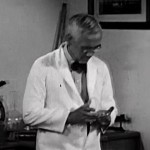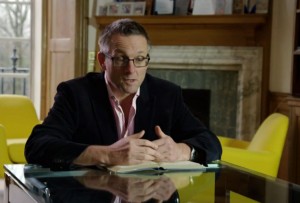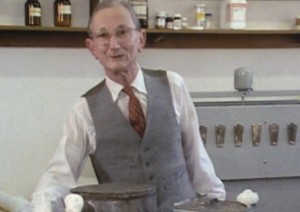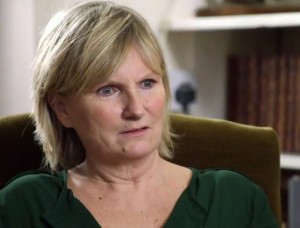
Michael Mosley “History books tell us that penicillin was a chance discovery by Alexander Fleming. He certainly found the mould growing in a Petri dish that killed bacteria, but it wasn’t him that turned it into the miraculous medicine we know today. However the name Norman Heatley is seldom mentioned.”
Norman Heatley the man who developed Alexander Fleming’s Penicillin
The thing is that Alexander Fleming was unable to extract anything useful from his mould. So, his discovery just lay gathering dust until more than 10 years later whn a mild-mannered biochemist named Norman Heatley took the first steps towards creating a life-saving drug. He was crucial in turning Fleming’s discovery into a practical drug.
He remains largely unrecognised. He was part of an Oxford team of scientists who, in the late 1930s, were searching for a new way to combat bacterial infection. If the bacteria killing properties of Fleming’s mould could be isolated, it might prove useful.
Michael Mosley
Dr Eric Sidebottom, friend of Norman Heatley’s records his key contribution to the team.
Dr Eric Sidebottom “He was the guy who developed all the methods, really, for extracting and purifying penicillin. That was a real problem, that’s why Fleming failed.”

Norman Heatley devised an ingenious chemical process that allowed the penicillin to be extracted from the mould. But, there was still a long way to go.
Dr Eric Sidebottom “The first step that was used for experimental purposes, was probably not much more than 1% of penicillin and he gradually, slowly improved that. “
Having cracked the extraction technique, the next step would be to test penicillin on mice to see if it killed infections. To do that they needed to grow more mould. Norman Heatley came up with an unusual solution.

Norman Heatley “And we found that you could grow the stuff in tins, curiously enough, but the best container was the hospital bin.”
Using bed pans and milk churns, the team eventually produced enough penicillin to begin animal trials.
Michael Mosley reading from Heatley’s notes “I stayed at the lab until 3.45 by which time all our control animals, the ones who hadn’t taken penicillin, were dead. But the treated mice were doing very well. It really looks as if penicillin could be of practical importance.”
They could now start human trials. But for much bigger subjects they needed a lot more penicillin. They achieved this with the help of the penicillin girls, six young women who grew mould in hundreds of vessels.
After years of hard work, the team proved that penicillin could be used to kill bacterial infections in humans. It was widely used in the war effort, where it was credited with saving countless soldiers’ lives.
Production began on an industrial scale. Penicillin became the world’s first effective antibiotic. In 1945 the Nobel Prize for medicine was awarded to Alexander Fleming and the lead scientist on the Oxford team. Norman Heatley didn’t get a mention. He was considered too junior.

Despite this oversight Heatley’s daughter Tamsin thinks her dad was too humble to be bitter.
Tamsin Heatley “I remember hearing him at a party once. Somebody said ‘Oh what do you do?’ and my father said ‘Oh nothing much, I am mostly a gardener.’ He was very modest, very kind. There was a war on, people were losing their lives all around. He had a strong moral code and felt that he could help mankind”
Norman Heatley was a vital link in a chain of people that turned a medical curiosity into a wonder-drug. Since its discovery, penicillin has saved the lives of millions of people.
Credits
The above information came from the BBC One Show, screened on 10th Feb 2016.
External Links
Norman Heatley - Wikipedia Page
